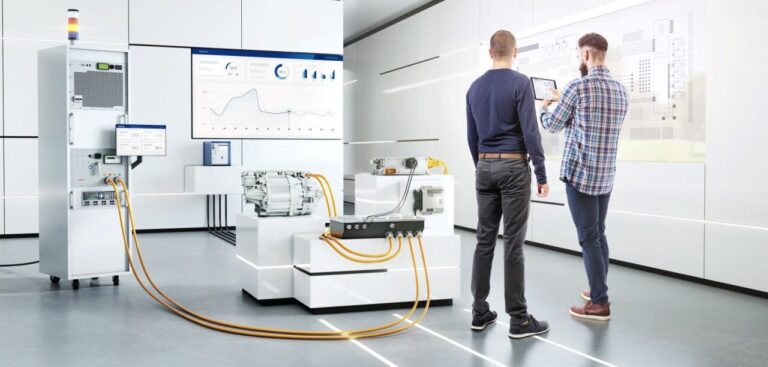With the number of electric vehicles on the rise, Bosch Engineering has designed and developed a high-voltage lab rig (HVLR) to offer an efficient and safe way to test EV power electronics in the development lab.
The system utilizes a high-voltage power supply alongside added electronic safety functions for the circuit of the component under test, all packaged into a portable compact control cabinet.
“Many of the tests on the power electronics of electric vehicles can therefore be shifted from the test bench to the high-voltage laboratory,” commented Andreas Nachreiner, head of product management business field eMobility at Bosch Engineering. “This frees up valuable bench capacity for other testing and validation tasks, thereby reducing development time and costs.”
With a modular design, the system can be adapted to meet the requirements for a range of customers. For example, different voltage levels of up to 1,200V can be selected, teamed with different communication interfaces and an optional. dummy load. It is also possible for the test rig to be upgraded to output voltages of up to 1,500V. Operation of the test rig is carried out via a touchscreen display, while a monitor provides users with an overview of parameters, status messages, information on system settings, and error warnings if they occur.
For Bosch Engineering, a focus when designing the high-voltage lab rig was ensuring an increased level of safety when carrying out everyday test operations.
“In the laboratory, a large number of tests have to be carried out directly on the live components of the power electronics,” explained Heinz-Georg Schmitz, director, engineering mechatronic solutions, Bosch Engineering. “Any mistakes here are life-threatening. Our protection concept covers potential causes of accidents and reduces the risks when working on the high-voltage circuit.”
The test rig also provides a level of protection for the object on test, ensuring that damage doesn’t occur during test sequences. This means that tests conducted on small batches of prototype components, where defects or damage could otherwise result in delays for a component’s development process, will hopefully not occur.
Furthermore, the test rig’s safety functions are handled by a separate unit, called the high-voltage safety box (HVSB). The HVSB offers a range of capabilities including isolation monitoring, an interlock circuit, integration into a laboratory emergency shut-off concept and a PLC interface, meaning the HVLR can be integrated into the test automation of the high-voltage laboratory and operated remotely.
Bosch Engineering states that the high-voltage safety box will be included with the high-voltage lab rig but is also available as a separate module. This enables customers to retrofit the product, along with its safety functions and the PLC interface, to existing high-voltage power supplies that are already in use.


